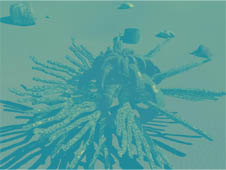Planets and Life
High in the sky
Study the stars
Hanging on my telescope
Look for a sign
Shine on my heart
Lend humanity some hope
- Vacuum, Parallel Universe
When the second generation space telescopes went online in the 2020's, astronomers were surprised by the number of earth-like planets they found. Instead of being unique, the Earth was of a fairly common type. Estimates suggested that as many as 1% of all stars had a terrestrial planet orbiting them. Of these many obviously had life, and perhaps a third of them had life and conditions that were close enough to the Earth that humans would likely be able to live there (not necessarily comfortably, but still survive - humans are very adaptable).
At the same time these good news worried some people. If life was common, where were the intelligent species? Either evolution to intelligence was very rare, or something wiped out intelligent species once they developed before they could put their mark on the universe. This "great filter" that lowered probabilities for finding intelligence either lay ahead or behind humanity. The optimists said that intelligence was rare due to the problem of evolving it and that humanity was nearly assured of a long and glorious future - the pessimists feared that something wiped out intelligence in the universe.
The discovery of the Trahans in 2127 and filigrees in 2193 were both exciting and calming, but didn't prove much since neither were starfaring species. When the Mothers were encountered in 2346 new information became available. There were certainly other species around. But why had none colonised the entire galaxy, or changed it noticeably? Where were the old super-species? Is the stagnation or annihilation the fate of all civilisations - or are there other possibilities?
